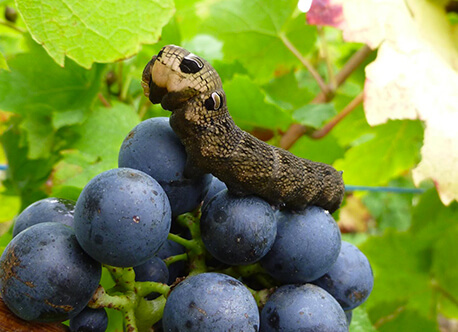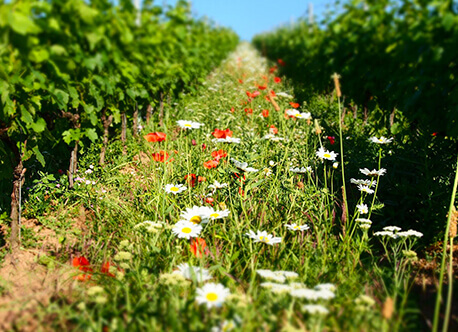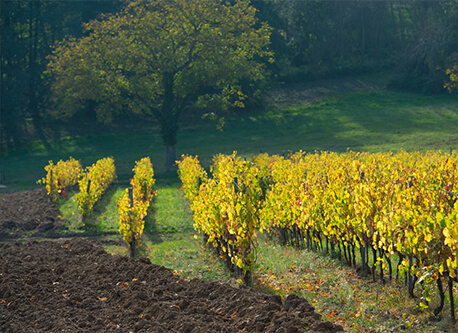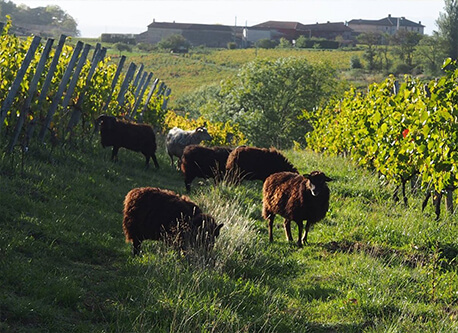


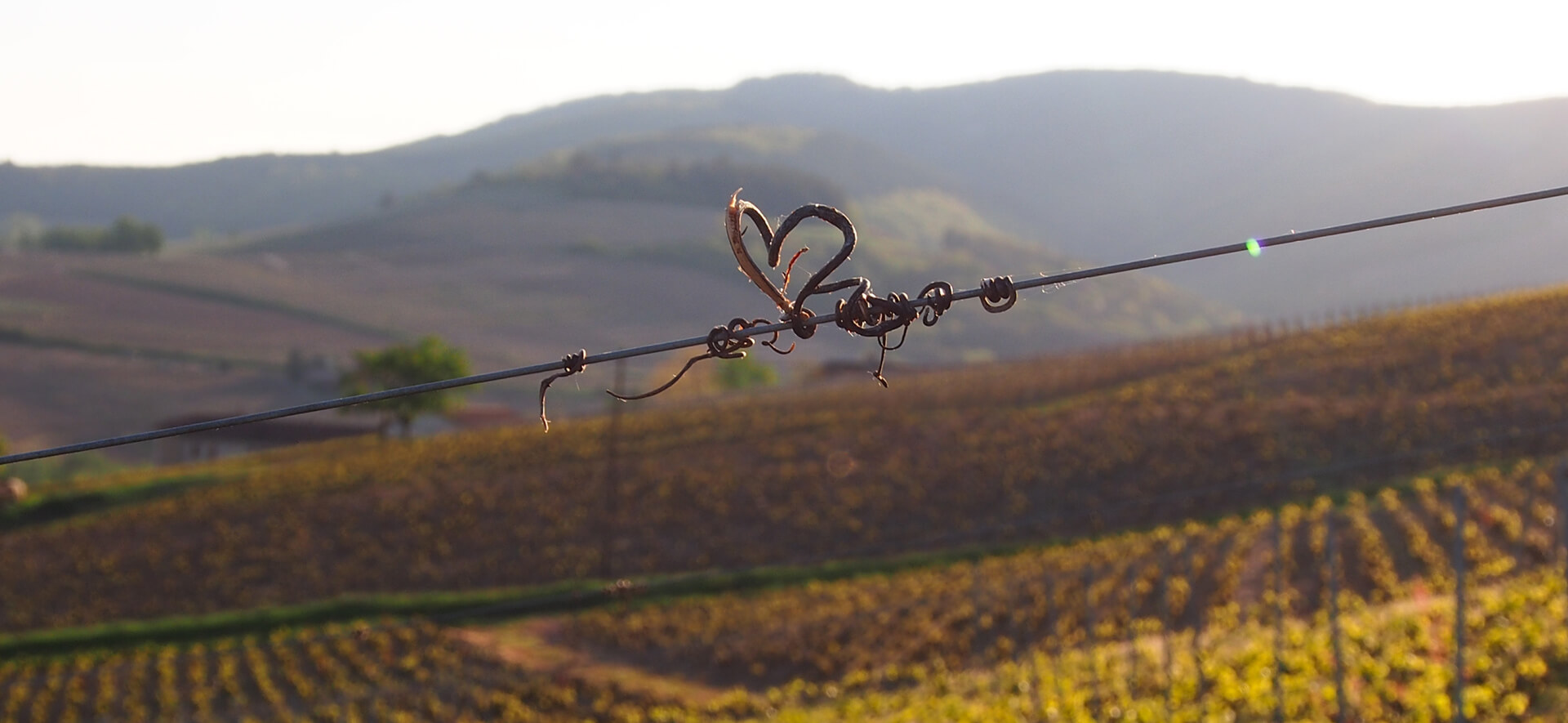
“Alone in the plant kingdom, the vine lets us understand what the real taste of the soil is.” Colette
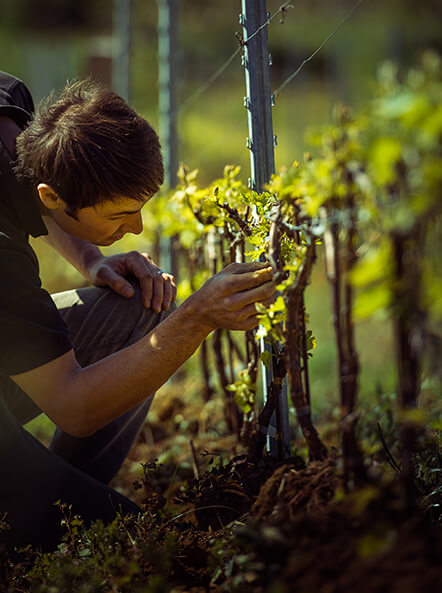
Just like the vines themselves, we’ve put down our roots in this vineyard for a great many generations; we are proud to perpetuate and maintain the work started by our ancestors. This continuity gives a deep meaning to our activity and a responsibility towards the future of this corner of France.
We take particular care of our soils, a real cradle for our wines and the source of their character. A healthy, living soil enables the vine to draw on the essence of the terroir. Thus the growing methods are adapted depending on the characteristics of each plot and the weather of the year.
Natural grassing, planting flower strips, eco-grazing by our sheep, light tilling beneath the vines, together with the regular addition of compost and natural products to stimulate the vine’s defences, are all growing techniques that help us maintain and improve the biological activity of our soils.
“Wine-growing is one of the last crafts to still master the whole production chain.”
We are constantly looking to optimize our growing practices, to ensure a perfect balance in the vineyard’s ecosystem with vines in good health and grapes of optimum quality, faithfully reflecting their origins.
In wine-growing, we often talk about “Terroir” — this magical ensemble of elements in a specific spot that makes a wine unique, that gives it a personality and brings it alive in a way that no œnological technique is capable of re-creating.
The soil and its structure form the principal player in the expression of the terroir. It is only by understanding and respecting the identity of the terroir that it can fully express itself through the wines and will be able to bring out the best of this divine product, born of the earth and the heavens.
Our estate’s wines are characterized by three principal terroirs:
The “blue rock” of Mont Brouilly, surrounded by the granitic arenas, and further south, by the clay/limestone soils of Theizé.
We are lucky to find very different terroirs around our estate, all equally interesting for our grape varieties. A volcanic terroir on the Côte de Brouilly, a granitic terroir in Brouilly, and a clay/limestone terroir for our Chardonnays.
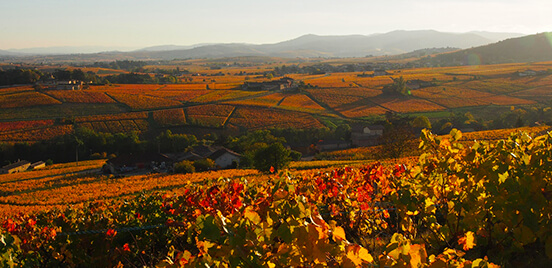
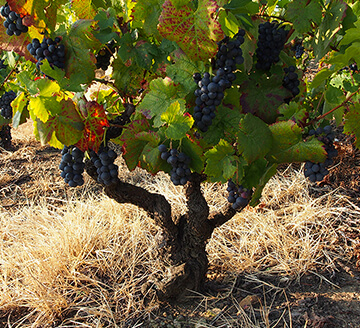
The Romans were already planting vineyards on Mont Brouilly, this isolated hill in the heart of the Beaujolais wine-growing region, and since then, the vines have never left these sunny slopes whose terroir has turned out to be so exceptional
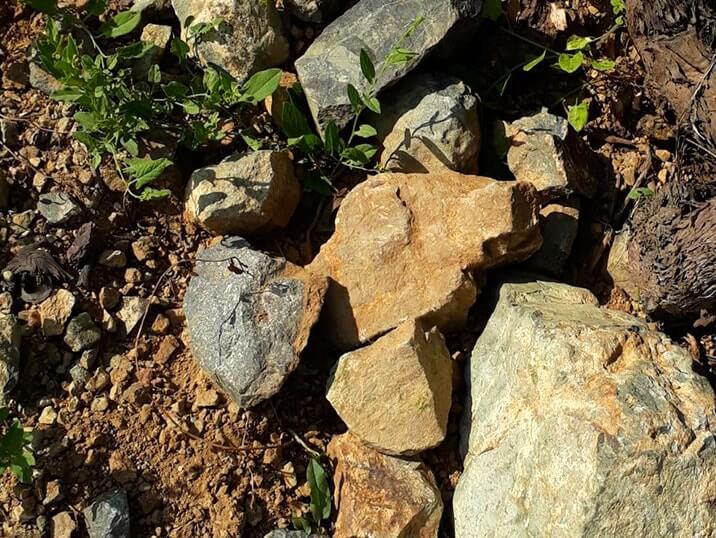
The “blue stones” or “corne verte” correspond to very hard micro-diorites and softer schists. When they are broken down, dioritic rocks give silty clay soils. Isabelle Letessier
This exceptional terroir on the steep slopes of the Côte-de-Brouilly appellation gives our Gamay a spicy minerality and solid structure. This terroir is where wines are forged with a complex character, powerful and elegant, with very good keeping potential.
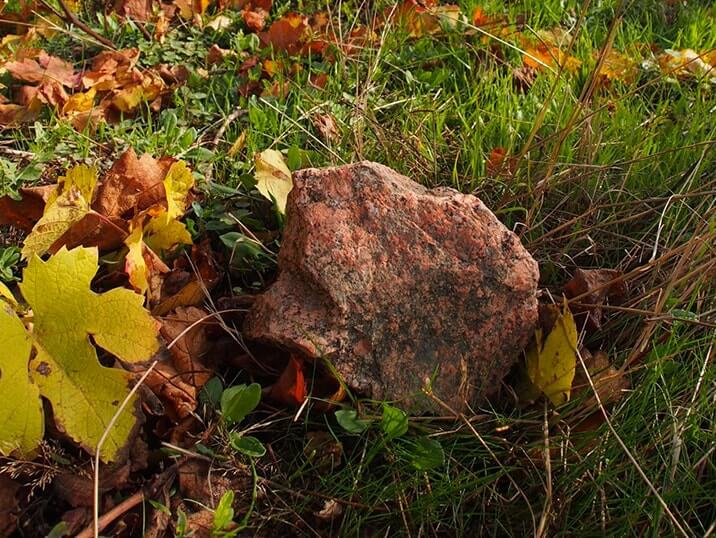
Through erosion, the granitic massif is turned into friable saprolite or “gore”, giving rise to shallow, sandy soils, well drained and low in organic matter — the perfect terroir for a Gamay, fruity and delicate, on a silky structure full of finesse, with scents of red fruit and a great deal of aromatic freshness.
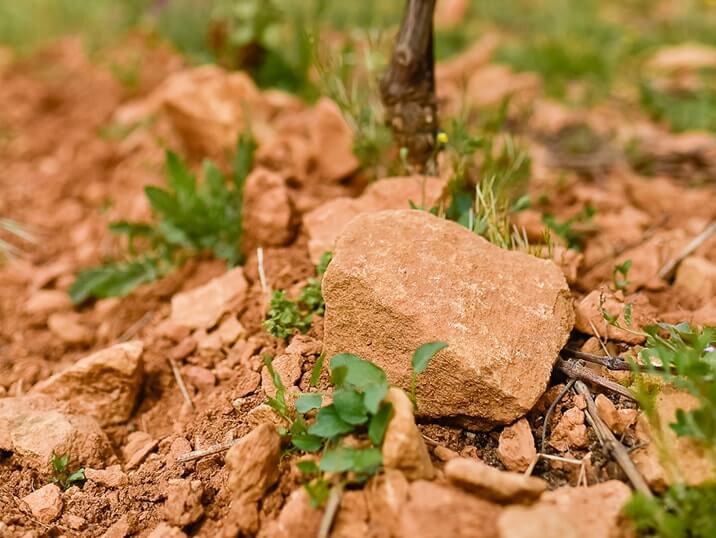
The “golden stones” are clay/limestone rocks coming from marls of the Jurassic (Secondary) era. This land is well drained by the gravels and through the slope. Chardonnay is the perfect interpreter of the clay/limestone soils in the “Golden Stones” area, revealing as it does the mineral purity and an elegant finesse.
“It is said to be one of the finest wine-growing regions of France.” With its ochre-tinted villages that toy with the sun’s reflections, curvaceously perfect between vine-covered hills and twisting valleys, its little winding roads taking you from one village to another, where sometimes Nature has been transformed into an old master painting. The disturbing resemblances with the Val d’Orcia and its clay/limestone hills in the province of Sienna have naturally seen it dubbed “the little Beaujolais Tuscany”. from an article by Guillaume Lamy

Like every living thing, vines need a complex environment and a biodiversity that naturally regulate the attacks from pests. This is why we take a great deal of interest in biodiversity in our vineyards. Since growing vines is basically a monoculture, it’s all the more important to balance this ecosystem by increasing the floristic diversity in the vineyard.
A multitude of wild plants, flowers, and herbs grow in our vineyards, providing shelter and food for a host of insects, birds, and small game. A great many auxiliaries (insects that are useful to the vines), bees, and birds find their food and build their homes in our vineyards, but hares, deer, pheasants, and partridges too have become regular visitors.
Mixtures of melliferous and leguminous flowers brighten up our vineyards and plots lying fallow waiting for fresh planting, while contributing organic material and preventing weeds.
We use mixture of green fertilizers that offer a great many advantages in our vineyards: the above-ground parts provide cover to the soil and protect it against drying out, erosion, and surface sealing; the roots loosen the soil, allow better drainage, and constitute reserves of nutrients.
And lastly, the plant cover provides a habitat for the microfauna and food for our vineyards’ auxiliary insects.
Although it seems obvious to us to preserve the surface flora and fauna, we often forget the life in the soil itself, this microfauna that is essential for the balance of a complex ecosystem.
To nourish this microfauna requires organic material to decompose, which comes from the green fertilizers, shredded vine shoots, and the addition of compost and manure.
The result of this transformation is a humus that is rich in nutrients that nourishes our vines and makes it possible to store carbon in the soils.
The hedges and trees planted around our vines have many advantages and serve many purposes in the vineyard; they provide shelter and homes for wildlife (game, birds, and insects); they break the wind that risks damaging the delicate shoots in Spring; and they help avoid soil erosion.
But the trees and hedges also play an important role in the structure of our fine wine-growing landscape, and in addition, offer good, tasty fruit.
We plant varieties that are naturally present in our region, suitable for the climate: beech, oak, blackthorn, willow, elder, hazel, walnut, wild cherry, almond trees, vineyard peaches, etc.
Our little herd of dwarf sheep help us maintain the grassing in our vineyards. After the grape harvests until the buds come out in Spring, they keep the grass down and fertilize the soil as they go.
